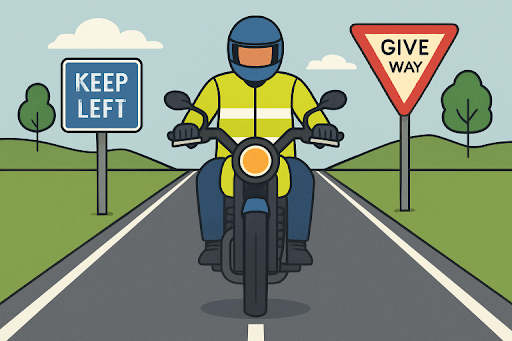Key Takeaways
- Helmets drastically lower the risk of severe head injuries and fatalities during accidents.
- Professional safety courses sharpen rider skills and improve hazard recognition.
- Adhering to posted speed limits and traffic laws is critical for safety.
- High-visibility clothing and proper lighting make you more visible on the road.
- Routine maintenance ensures your motorcycle is safe and reliable.
Riding a motorcycle is an exciting way to travel, offering riders a thrilling sense of freedom and adventure. However, this excitement comes with heightened exposure to risks on the road. Whether you’re a seasoned rider or just starting, understanding best practices for safety can make a significant difference in your life. Proactive actions, informed decisions, and robust precautionary measures all play vital roles in avoiding dangerous situations. For motorcyclists involved in an accident or seeking personalized legal support, consulting a specialized attorney can be invaluable—consider reaching out to an expert at https://lawbike.com/motorcycle-accident-injury-attorney/ for guidance.
Many motorcycle accidents and injuries are preventable. Effective preparation and rider education not only lower accident rates but also make each ride more enjoyable and secure. By embracing proven safety strategies, you can develop lifelong habits that dramatically reduce your odds of serious injury. These habits extend beyond the ride itself, influencing everything from route planning to gear selection.
Wearing a Helmet
Helmets are the single most effective way to protect yourself in the event of a motorcycle crash. According to the National Highway Traffic Safety Administration (NHTSA), the risk of death is reduced by 37% for helmeted riders, and the risk of serious brain injury drops by 67%. Despite these benefits, helmet use varies due to differing state laws, with only 18 states enforcing universal helmet laws. States with strict helmet requirements consistently report fewer fatalities and hospitalizations than those without them. These numbers make a compelling argument for choosing a Department of Transportation (DOT)-compliant helmet every time you ride.
Taking Safety Courses
Safety courses aren’t only for beginners; even veteran riders benefit from skills refreshers. The Motorcycle Safety Foundation (MSF), along with other organizations, offers comprehensive training in advanced riding techniques, defensive driving, and emergency maneuvers. Course completion can lead to insurance discounts and greater confidence on busy roads. Regularly investing time in learning new techniques ensures that you’re always prepared to react safely to unexpected dangers.
Obeying Traffic Laws
Sticking to speed limits, obeying signs, and recognizing your responsibilities around other road users safeguards not only your life but also the lives of fellow motorists. Excessive speed and ignoring signaling are among the most prevalent factors in motorcycle collisions. In 2022, the majority of fatal motorcycle crashes were linked to speeding and the inability to yield. Safe and responsible riding also protects you legally and may simplify insurance claims in the event of an incident.
Enhancing Visibility
Visibility is a recurring challenge for motorcyclists, as many collisions occur when drivers fail to spot motorbikes in time. Wearing highly visible or reflective gear, riding with headlights on—even during daylight—and strategically positioning yourself in traffic all help. Neon colors and retro-reflective strips increase your visibility, especially in low-light conditions.

Regular Maintenance
Before setting off, a quick check can reveal worn tires, faulty brakes, or minor leaks that could become dangerous on the road. Regular inspections and routine servicing help prevent mechanical failures, and maintaining accurate maintenance logs is particularly useful if you’re ever involved in an insurance claim or legal matter. Riders should always prioritize resolving issues immediately rather than risking a ride with potential faults.
Avoiding Alcohol and Drugs
Riding under the influence seriously impairs judgment, coordination, and reaction time. Recent reports highlight that nearly one-third of motorcyclist deaths involve alcohol. Crash risks multiply on weekends and during nighttime hours, when impaired driving incidents typically spike. Designate a sober driver or arrange safe transportation whenever necessary; your life and the safety of others are well worth the planning.
Using Advanced Safety Gear
Innovations in motorcycle safety equipment continue to evolve, and modern options, such as airbag vests or jackets, offer enhanced protection. These technologies use sensors and onboard computers to deploy airbags during a crash sequence, providing a cushion for vital areas before impact. Wearing armored riding jackets, reinforced gloves, and over-the-ankle boots adds layers of safety that can significantly reduce the risk of injuries in a spill or slide.
Staying Alert and Defensive
Road hazards such as potholes, slick surfaces, loose gravel, and inattentive drivers require constant vigilance. Always scan the road ahead, keep an eye on mirrors, and assume that other motorists may not see you. Defensive riding means anticipating others’ mistakes—whether it’s a sudden lane change from a texting driver or a door opening from a parked car. Simply being alert and giving yourself extra space and time to react can prevent many common accidents.
By adopting these essential strategies, motorcyclists significantly increase their chances of avoiding accidents and enjoying safer journeys. Every decision—from choosing the right helmet to taking a safety course—contributes to a culture of responsibility and protection on the open road.





